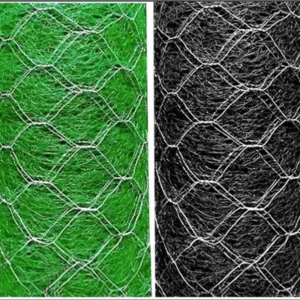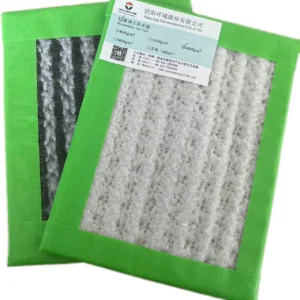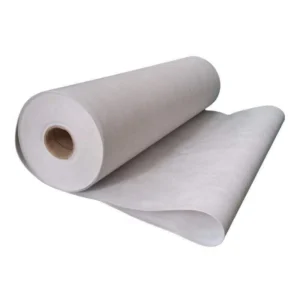LDPE Geomembrane
LDPE geomembrane is a plastic film as a substrate, relative to the HDPE geomembrane has a better tensile strength and flexibility, is a newer generation of geotechnical seepage control materials.
Share:
Description
LDPE geomembrane is a plastic film as a substrate, relative to the HDPE geomembrane has a better tensile strength and flexibility, is a newer generation of geotechnical seepage control materials. The product and geotextile bonded geotechnical seepage control material with corrosion resistance, low temperature resistance, light weight, tear resistance and other characteristics; its low cost, high quality and low price is the same category of other geotechnical seepage control materials can not be comparable.
As a new generation of geotechnical seepage control material, LDPE geomembrane is mainly made of polyethylene, ethylene, vinyl polymer and other materials polymerization, which absorbs the flexibility of previous geomembranes, and increases its ability to adapt to deformation.
It is increased its good extensibility, adapt to deformation and other capabilities. Greatly increase its waterproof seepage control ability.
Widely used in construction, water conservancy, chemical industry, transportation, subway, garbage disposal site, reservoir dam reinforcement, tunnels and other projects, its adaptability to a wide range of ambient temperatures, high puncture resistance strength, friction
Its adaptability to a wide range of environmental temperatures, high puncture resistance, high friction coefficient and other characteristics, and its protective layer – geotextile combination of geotechnical seepage control materials and its waterproof seepage control superior performance is immeasurable.
Scope of Application
LDPE geomembrane main application scope: municipal environmental protection, sanitation seepage control project; water seepage control project; gardening and landscaping water seepage control project; transportation infrastructure seepage control project; agricultural water conservancy seepage control project; aquaculture industry.
Project; aquaculture industry. As well as other implementation of seepage control, anti-corrosion, leakage control, reinforcement, leachate collection.
Construction Program
1. LDPE geomembrane should be laid by the corresponding qualified acceptance documents of civil engineering before laying.
2. Before cutting LDPE membrane, it should accurately measure its relevant dimensions, and then cut according to the actual cutting, generally should not be cut according to the size shown in the drawing, should be numbered piece by piece, recorded in detail on a special form.
3. When laying LDPE geomembrane, we should strive to minimize the welded seams, and try to save raw materials under the premise of quality assurance. It is also easy to ensure the quality.
4. The lap width of the joints between the membrane and the membrane is generally not less than 10cm, usually so that the welds are arranged in the direction parallel to the maximum slope, i.e., along the direction of the slope.
5. Usually in the corner and deformed lots, should be the seam length as short as possible. In addition to special requirements, in the slope greater than 1:6 slope from the top slope or stress concentration area within 1.5 meters, as far as possible, do not set up welded seams.
6. LDPE geomembrane should avoid artificial folds in laying, and when the temperature is low, it should be pulled tight and paved flat as much as possible.
7. After the LDPE geomembrane is laid, walking on the membrane surface, moving tools, etc. should be minimized, and any objects that can cause harm to the LDPE membrane should not be placed on the membrane or carried on the membrane to avoid accidental damage to the membrane.
Application
LDPE geomembrane main application scope: municipal environmental protection, sanitation seepage control project; water seepage control project; gardening and landscaping water seepage control project; transportation infrastructure seepage control project; agricultural water conservancy seepage control project; aquaculture industry.
Project; aquaculture industry. As well as other implementation of seepage control, anti-corrosion, leakage control, reinforcement, leachate collection.
Application pain points
Widely used in construction, water conservancy, chemical industry, transportation, subway, garbage disposal site, reservoir dam reinforcement, tunnels and other projects, its adaptability to a wide range of ambient temperatures, high puncture resistance strength, friction
Its adaptability to a wide range of environmental temperatures, high puncture resistance, high friction coefficient and other characteristics, and its protective layer – geotextile combination of geotechnical seepage control materials and its waterproof seepage control superior performance is immeasurable.
Technical specifications
| Performance | Test Standard | Unit | Haoyang | 28kN | 34kN | 40kN | |||
|---|---|---|---|---|---|---|---|---|---|
| Q/CR 549.5-2016 | PP filament spunbonded | Q/CR 549.5-2016 | PP filament spunbonded | Q/CR 549.5-2016 | PP filament spunbonded | ||||
| Gram Weight | ISO 9864 (GB/T 13762) | g/m² | 400 | ≥400 | 500 | ≥500 | 600 | ≥600 | |
| Thickness | ISO 9863 (GB/T 13761) | mm | 3.4 | ≥3.3 | 4.2 | ≥4.0 | 4.6 | ≥4.5 | |
| Tensile Strength | ISO 10319 (GB/T 15788) | kN/m | 28.5 | ≥28 | 35 | ≥34 | 40.5 | ≥40 | |
| Elongation | ISO 10319 (GB/T 15788) | % | 70/80 | 40–100 | 70/80 | 40–100 | 70/80 | 40–100 | |
| Grab Strength | ASTM D 4632 (GB/T 24218.18) | N | 1730 | ≥1700 | 2200 | ≥2150 | 2850 | ≥2800 | |
| Tear Strength | GB/T 13763 | N | 780 | ≥750 | 870 | ≥850 | 1050 | ≥1000 | |
| CBR Bursting Strength | ISO 12236 (GB/T 14800) | N | 4400 | ≥4200 | 5500 | ≥5400 | 6250 | ≥6200 | |
| Equivalent Aperture (O90) | ISO 12956 (GB/T 17634) | mm | 0.11 | 0.07–0.3 | 0.09 | 0.07–0.3 | 0.08 | 0.07–0.3 | |
| Vertical Permeability Coefficient | ISO 12958 (GB/T 17633) | cm/s | 3.0×10^-1 | ≥1×10^-2 | 2.9×10^-1 | ≥1×10^-2 | 2.8×10^-1 | ≥1×10^-2 | |
| UV Resistance – Tensile Strength Retention | ISO 10319 (GB/T 15788) | % | 85 | ≥80 | 85 | ≥80 | 85 | ≥80 | |
| Acid and Alkali Resistance – Tensile Strength Retention | ISO 10319 (GB/T 15788) | % | 93 | ≥90 | 93 | ≥90 | 93 | ≥90 | |
| Product Specification | mm | 1000–6500 |
Related products
-
Waterproof Blanket Series
Anti-clogging drainage net
-
Waterproof Blanket Series
Cement blanket
-
Composite Film Series
Powder type sodium bentonite waterproof blanket
-
Composite Film Series
PP high strength geotextile









